In Boston’s increasingly competitive hotel industry, what does it take to stay on top? The Omni Parker House, America’s longest continuously operating hotel – and proud originator of the Boston cream pie – earns its four-star Trip Advisor rating by investing in its most important asset: its people. The first step is meeting basic employee needs through generous wages and full benefits. But the key to the Omni’s exceptional customer service lies in recruitment, training, and performance management systems that empower frontline staff to make decisions, solve problems, and advance to management roles. The Aspen Institute recently spoke with Alex Pratt, Area Director of Human Resources at Omni Hotels & Resorts, a chain of 53 hotels that includes Boston’s Omni Parker House. Alex brings more than 25 years of experience in hospitality, and has achieved industry-leading retention and high employee satisfaction at the Parker House.
Hospitality ranks among America’s fastest-growing sectors, but millions of hotel workers are not reaping the rewards. Boston Education, Skills & Training (BEST) Corp. is solving this problem by providing best-in-class training that prepares workers to excel and engages hotels in discussions about the value of training. BEST was founded in 2004 as a nonprofit workforce development program focused on helping individuals develop skills and find good jobs in Boston’s hospitality industry. BEST serves nearly 500 job seekers and hotel workers each year, with training in English, computer skills, culinary skills, and industry-specific certifications like food safety. Through career coaching, BEST helps participants secure quality jobs and provides hotels with the skilled talent to thrive in an increasingly competitive industry. As the third prong of a productive labor-management partnership, BEST works closely with Local 26, the hospitality worker’s union, and its high road hotel employers. These 35 hotels pay a starting hourly wage as high as $21.43 to BEST graduates, and provide a generous benefits package, which includes career advancement training through BEST. BEST’s model programs benefit workers, hotels, and Boston’s regional economy by placing engaged employees in stable jobs. BEST reaches the working poor – particularly immigrants and people of color – and provides them with the opportunity to obtain a quality job and enter the middle class. Hotel partners report that BEST-trained workers bring the critical thinking skills and cultural competency to perform better with decreased turnover, contributing to stronger financial performance. The Aspen Institute’s interview with Alex Pratt, Area Director of Human Resources at Omni Hotels & Resorts, speaks to BEST’s vital role in preparing top talent and enabling operational excellence. The Aspen Institute recently caught up with Marie Downey, the founding Executive Director of BEST, and Joan Abbot, BEST’s Assistant Director, to learn more about how BEST partners with high road employers to prepare workers to excel in quality jobs.
In July 2017, the Aspen Institute convened its second annual Economic Security Summit, “Reconnecting Work and Wealth: Constructing a New American Middle Class.” Where a cross-section of leaders from industry, academia, philanthropy, government, and nonprofit organizations grappled with how to restore widespread economic prosperity to families and communities all across America. This report captures the ideas that emerged as participants debated factors contributing to the growing economic divide, what inequality means for our democracy, and potential opportunities to strengthen family economic security and upward mobility in the 21st century.
This brief describes a strategy that helps connect young adults to “now jobs” that address their immediate income needs while continuing to prepare them for long-term career opportunities.
This case study of a company in Milwaukee is part of an Equity in Apprenticeship series highlighting programs that use apprenticeship to extend career opportunities to historically marginalized groups. Employers and practitioners can glean lessons related to achieving equitable outcomes through apprenticeship programs.
This guide is designed to provide an overview of work-based learning models and guidance on implementation. Work-based learning can be valuable for career advancement if combined with supportive practices and clear directives on how skill development is related to the company’s advancement practices. This can be a helpful resource for employers as well as practitioners and educators to discuss work-based learning with a business audience.
This toolkit by the Department of Labor provides steps and resources to start and register an apprenticeship program. When delivered appropriately and connected to advancement opportunities, apprenticeships can strengthen job quality by increasing worker stability and mobility. This toolkit could be particularly useful for a business or labor organization, a workforce intermediary, a community-based organization, or an education institution developing an apprenticeship program.
This report details findings from a landscape scan that identified emerging trends and field-building opportunities for sector partnerships that are working to embed equity and reduce disparities. This can be a useful resource for workforce practitioners seeking to frame their work around equitable outcomes.
This publication details seven key components of a modernized tuition assistance program, including flexibility, inclusiveness, affordability, and support. This information can be useful to employers seeking to develop or enhance a tuition assistance program and to practitioners who work with businesses to improve worker mobility.
This step-by-step guide by Upskill America, an initiative of the Economic Opportunities Program, and the Institute for Corporate Productivity details the steps to change an organization’s tuition assistance program to a tuition disbursement program, providing financial support for education up-front rather than offering reimbursement after a worker has completed a program. This simple change to the structure of a tuition assistance program has important job quality and equity implications; it can make education and upskilling accessible to workers who are eager to learn but lack access to resources to pay for school. This tool is useful for employers and all practitioners who work with them to strengthen job quality.
